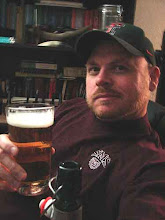 On 14 October 2010, I was fortunate to present a paper at the 2010 Rocky Mountain Modern Language Association (RMMLA) conference in Albuquerque, NM. Now I love Albuquerque and I have attended some conference there every year since 2006 (5 total) so I was really hoping to get to participate. Once I got there, however, I could little believe how friendly and open the other conference attendees were both at my presentation and out by the coffee/tea bar. In addition, I listened to some fine papers in both Technical communication and literature. I hope that I will be able to attend next year in Scottsdale, AZ and, if you study literature, writing, or technical communication, you should too. Here is a snapshot of my presentation:
On 14 October 2010, I was fortunate to present a paper at the 2010 Rocky Mountain Modern Language Association (RMMLA) conference in Albuquerque, NM. Now I love Albuquerque and I have attended some conference there every year since 2006 (5 total) so I was really hoping to get to participate. Once I got there, however, I could little believe how friendly and open the other conference attendees were both at my presentation and out by the coffee/tea bar. In addition, I listened to some fine papers in both Technical communication and literature. I hope that I will be able to attend next year in Scottsdale, AZ and, if you study literature, writing, or technical communication, you should too. Here is a snapshot of my presentation:Abstract
Analyzing and articulating different audiences is a significant challenge for students of technical communication. Instructors of technical communication can provide these future practitioners with the tools to accurately identify and profile specific audiences by introducing heuristics that synthesize dimensions of technical expertise and culture. By practicing how to use this heuristic in ‘real-world’ contexts, instructors can provide students the tools necessary to identify and articulate specific targeted audiences within a global environment.
In this presentation, I first briefly examine two common audience analysis heuristics: technical expertise and dimensions of culture. Both approaches can provide valuable guidelines for practitioners of technical communication to assemble effective audience analyses for their writing projects.
Next, I articulate how technical communicators can benefit from incorporating these heuristics into the classroom. Specifically, technical communication students can function as symbolic-analytic workers and information architects as they synthesize technical expertise with cultural dimensions in order to analyze a specific audience for a deliverable such as technical instructions.
Finally, I offer a pedagogical approach to introducing heuristics of technical expertise and cultural dimensions into the service-level technical communication classroom. Specifically, I introduce my heuristic approach to audience analysis in the classroom: The Technical Frame.
Presentation Slides










If you are so inclined, or if you suffer from insomnia, you can read more about my conference presentations at Academia.edu.
-Safari Bob






